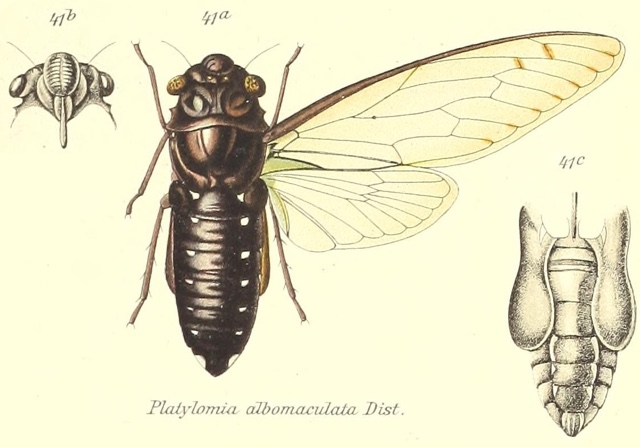Carineta verna Distant, 1883, is a cicada found in Panama.
Scientific classification:
Family: Cicadidae
Subfamily: Cicadettinae
Tribe: Carinetini
SubTribe: Carinetiina
Genus: Carineta
Species: Carineta verna Distant, 1883

Carineta verna species description by W. L. Distant:
Head with the vertex pale castaneous, the front greenish and the eyes fuscous. Pronotum green, tinged with ochraceous. Mesonotum dull ochraceous, with two faintly indicated central obconical spots at anterior margin, a small rounded black spot near each anterior branch of the cruciform basal elevation, and the basal lateral margins pale greenish. Abdomen above and beneath pale castaneous. Head and thorax beneath pale greenish ochraceous and pilose; legs ochraceous, more or less tinged with greenish, tarsal claws and the extreme apices of intermediate and posterior tibiae fuscous. Rostrum ochraceous, the apex pitchy and reaching the posterior coxae. Tegmina and wings pale hyaline, the venation greenish and ochraceous; first apical area much longer than second, and about equal in length to fourth, fifth, and sixth. Anterior femora armed beneath near apex with three prominent and distinct spines, gradually decreasing in size.
References:
- The illustration comes from Biologia Centrali-Americana. Insecta. Rhynchota. Hemiptera-Homoptera. Vol. 1. By W. L. Distant F.E.S. and The Rev. Canon W. W. Fowler, F.L.S. (1881-1905). Read it on the Biodiversity Heritage Library website.
- Species name verification comes from Allen Sanborn’s Catalogue of the Cicadoidea (Hemiptera: Auchenorrhyncha).









